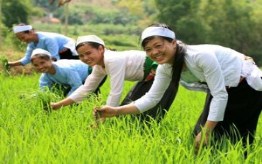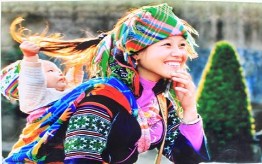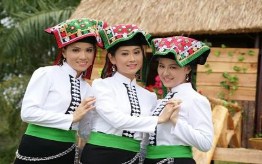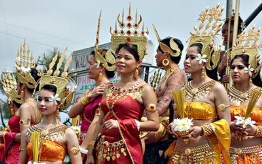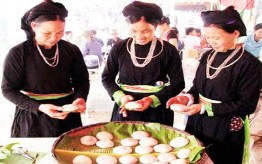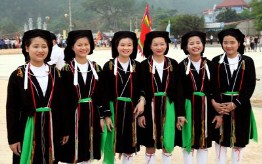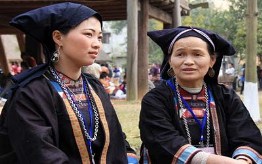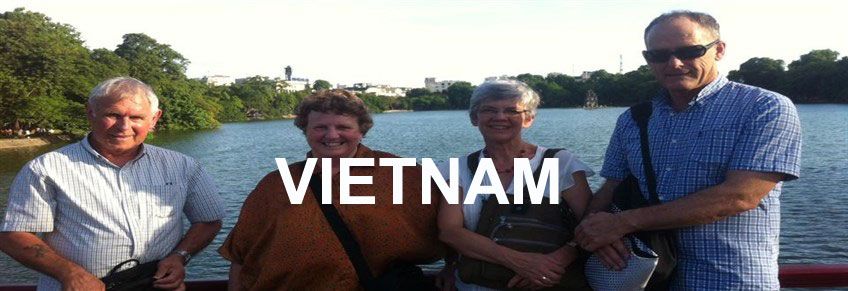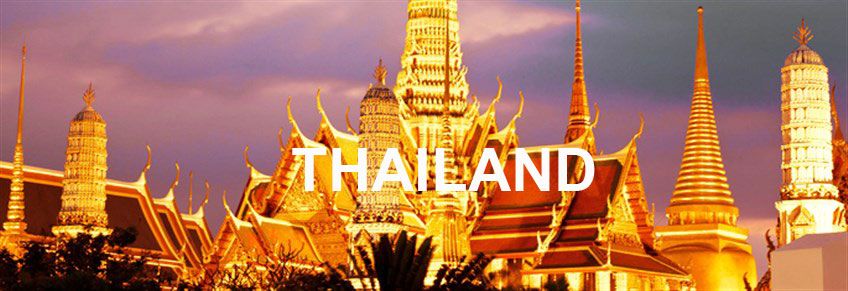Proper name: Bahnar
Other names: Bo Nam, Roh, Kon Kde, Ala Kong, Kpang Kong, etc.
Population: 136,859 people
Local groups: Ro Ngao, Ro Long (or Y Lang), To Lo, Go Lar, Krem.
Language: Bahnar language belongs to the Mon-Khmer language group (of the Austroasiatic language family).
History: The Bahnar are long-term inhabitants of Truong Son-Tay Nguyen central highlands. They have created a unique local culture and their own socio-culture identity.
Production activities: The Bahnar live mainly on the cultivation of swidden fields and slash-and-burn agriculture. The hoe is main food used in agricultural production. Intensive land cultivation of swidden fields using the slash-and-burn method dispenses with the notion of allowing fields to go fallow after a period of time. In general, swidden fields are located near rivers and stream and have long been popular among the Bahnar. But since the beginning of the 20th century, wet rice cultivation using harrows is also practiced. Horticulture and diversified crops also appeared quite along time ago. Animal husbandry and craft production, such as basketry, cloth weaving, pottery and blacksmithing, are less developed.
Lifestyle: The Bahnar people live in vast areas from Gia Lai and Kon Tum to the west of Binh Dinh, Phu Yen and Khanh Hoa provinces. They mostly live in stilt houses, which are characterized by having the entrance door at the front of the house. The roofs are decorated with horns at either end. There is a communal house (nha rong), identified from other dwellings by its magnificent high roof. The communal house is a place where public activities are held, including education for the youth, ceremonies, trials, etc.
Transportation: The chief means of transporting things is the gui (bamboo or rattan backpacks). The gui has many sizes and types and can be woven differently, but usually follow traditional motifs.
Social organization: The village is primary social unit. Vestiges of matriarchal social structure are still in evidence in b family relations, lineages systems, and marriage. The decline of matriarchy has raised the position of men, but social relationships still tend to be closer to the mother’s family. After marriage, the Bahnar custom still prevails that the groom stays at his wife’s house. Society is differentiated among those who are rich, those who are poor, and those who are classed as servants.
Marriage: Monogamy is a basic principle of Bahnar marriage. The exchange of living places by the newly-married couples is increasingly popular. After a period of time when the husband lives at his wife’s house, and vice versa, the couple then moves to a new place to settle and becomes a new cell of the community.
Education: Education for youths takes place at the communal house, taught by the village elders. This traditional education includes job training, marital arts, combat techniques, and the values of the community.
Artistic activities: Folk songs are ample, but more popular ones are hmon and roi lyrics. Musical instruments played by the Bahnar include percussion and aero phone instruments as well as chordophones (stringed instruments). Traditional dances are popular, performed on ceremonial occasions and seasonal festivals. The long poems and folktales of the Bahnar are unique, traditional works that are an important part of Vietnam’s cultural patrimony.
Games: Among the popular games are chasing (dru dra), rope seizing, stone throwing, ball kicking spinning top, and khang playing

